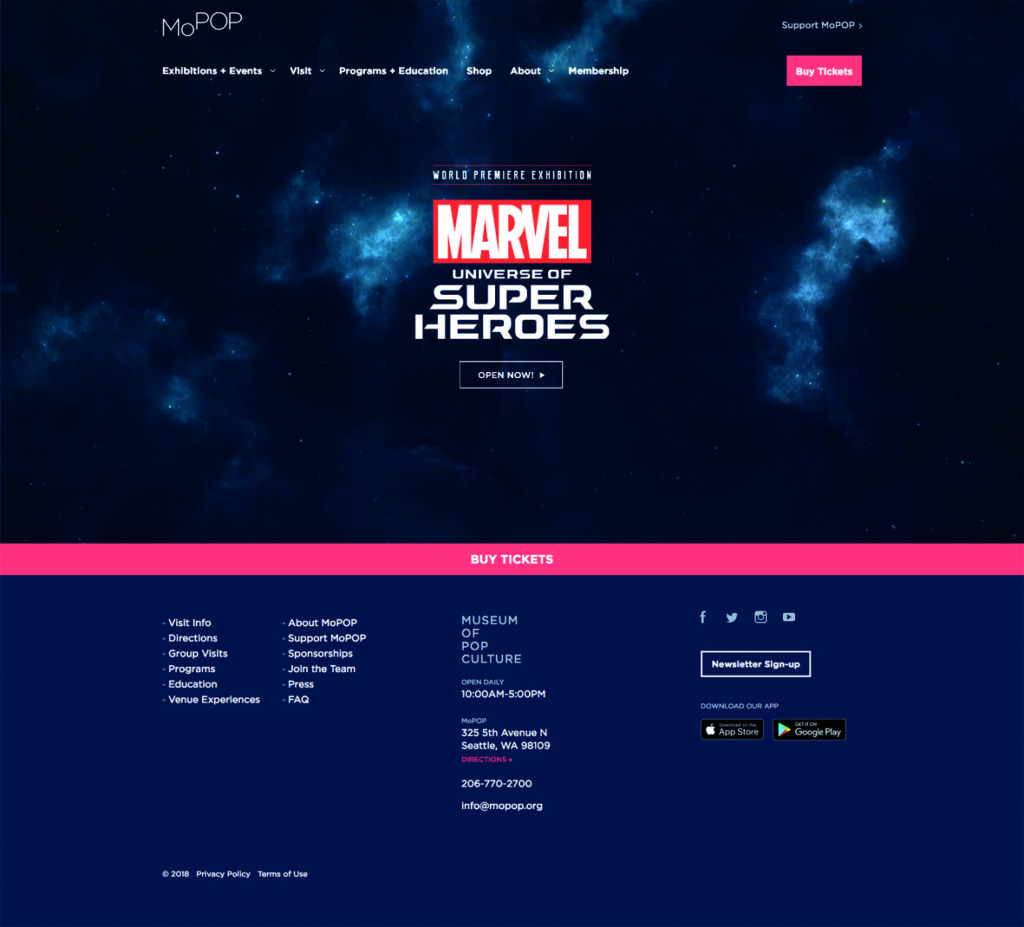
From dance crazes like the ‘Floss’ to films, songs and toys, there are a wide range of cultural experiences and interests students have that often seem disconnected from their classroom learning. As highlighted in this issue in ‘Why Pop Culture Needs to be a Part of STEM Education’ (p. 62), simple tweaks to subject content can make a significant difference in how students relate to a subject and get them emotionally invested in pushing forward to develop new skills.
Although it can be overwhelming to think about where to start with pop references in the classroom and to come up with ideas that offer both enjoyment and depth of coverage, there are many resources available. In the following section, we’ve highlighted just a few of the available websites that are finding creative and innovative approaches to teaching subject material using popular culture. Many of these include lesson plans or videos that can be used in class, but others have online platforms that allow students to create videos or magazines, or engage directly with the material through quizzes or online assessment.
It is clear that many teachers are finding in popular culture a way of keeping their own teaching fresh and ensuring students have a range of experiences in the classroom and we’re pleased to be able to share some of these ideas and approaches with you.
Making Curriculum Pop
Making Curriculum Pop describes itself as “a resource sharing community for educators interested in better practices and teaching with pop culture”. It is a sharing hub with more than 7,000 members and groups that cover a wide range of interests and teaching ranges. The owner of the page, Ryan Goble, states that the site was set up because “it is hard for individual teachers to catch every cool website, video clip, song, study guide or comic but collectively MC POP is a forum where we can all share resources to reinvent our core curriculum and the larger dialogue on public education. So if you use popular and common cultures to reflect, refract, refocus and reinvent your core curriculum MC POP is the place for you.”
Users can set up their own page and from there can connect to other teachers and any of the 87 listed groups. Group categories include subjects or levels as well as special interest topics like ‘Identity: Gender, Race, Sex, SES and Power’, ‘Graphic Novels and Comics’, ‘Adolescent Films’, ‘Making Music Pop’, etc. Members post all sorts of resources, including lesson plans, videos and articles, along with discussion threads and suggestions for primary sources. There is a ‘Week in Review’ section where top articles, links and threads are compiled, highlighting the main interests of the week. Members can post links to articles, videos and other web content and they can contribute to discussion threads and curate their own ‘playlists’ or write messages/content that would be of use for other teachers. For teachers interested in further pursuing the pop culture angle, the owners of the site have also published a book engaging with related teaching theory called Making Curriculum Pop: Developing Literacies that was published in 2015 by Free Spirit Pub.
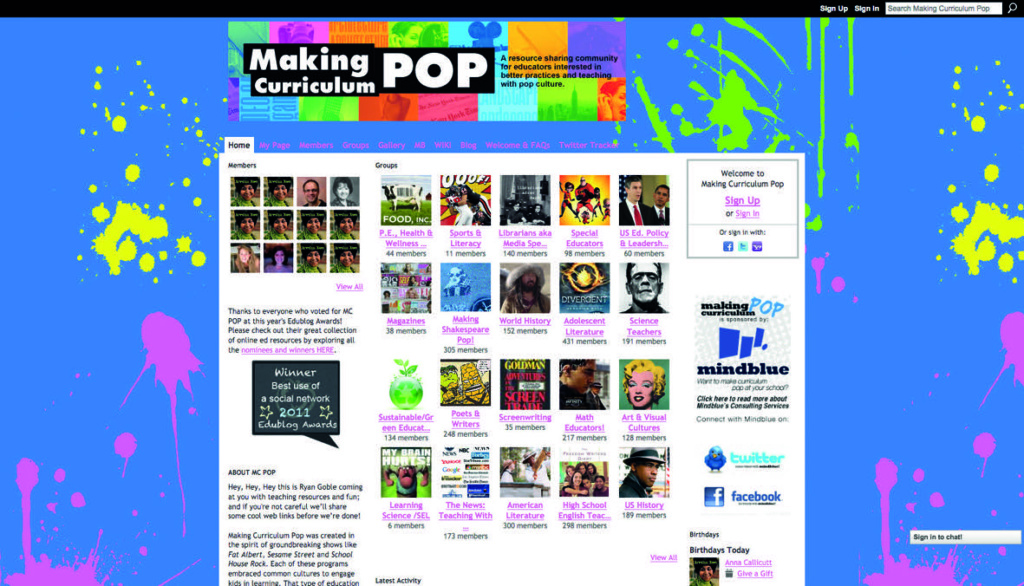
NuSkool – Real Life Learning
NuSkool is an entertainment learning platform that finds teachable moments in popular culture. Their aim is to help the audience find the hidden lessons in all aspects of entertainment. They see their job as showing the world that learning isn’t confined to a textbook and occurs both inside and outside the classroom, which is what they consider ‘real life learning’.
NuSkool has a team of highly qualified educators, researchers and pop culture experts who produce videos, articles, standards aligned lesson plans, quizzes and other types of assessments. The lessons themselves can be accessed for free off the home page and include titles such as ‘X-Men: Are Mutants Already Among Us?’, which is a lesson on evolution and genetics, or ‘Will the Real Iron Man Please Stand Up?’, a Physics and English Language Arts lesson based on the public figures Elon Musk and Tony Stark. Other topics include Donald Trump, police brutality, Star Wars, prosthetic limbs, baseball, bullying, video games, and many others. The lessons include written aspects as well as videos and media content. Each one has a full lesson plan and assignment that the student can fill out on the website. The lessons and assignments are free, but the lesson plans are available via subscription. Subscription packages are affordable, ranging from $1.99 per day to $70 per year. Subscription access also includes access to assessments, quizzes and test prep exams, unlimited student accounts, the ability to create online classes and send lessons to students and the capacity to facilitate private group discussions with students on each post. This is an excellent resource for using pop culture in the classroom and is a great way to get new ideas for thinking about this approach to teaching.
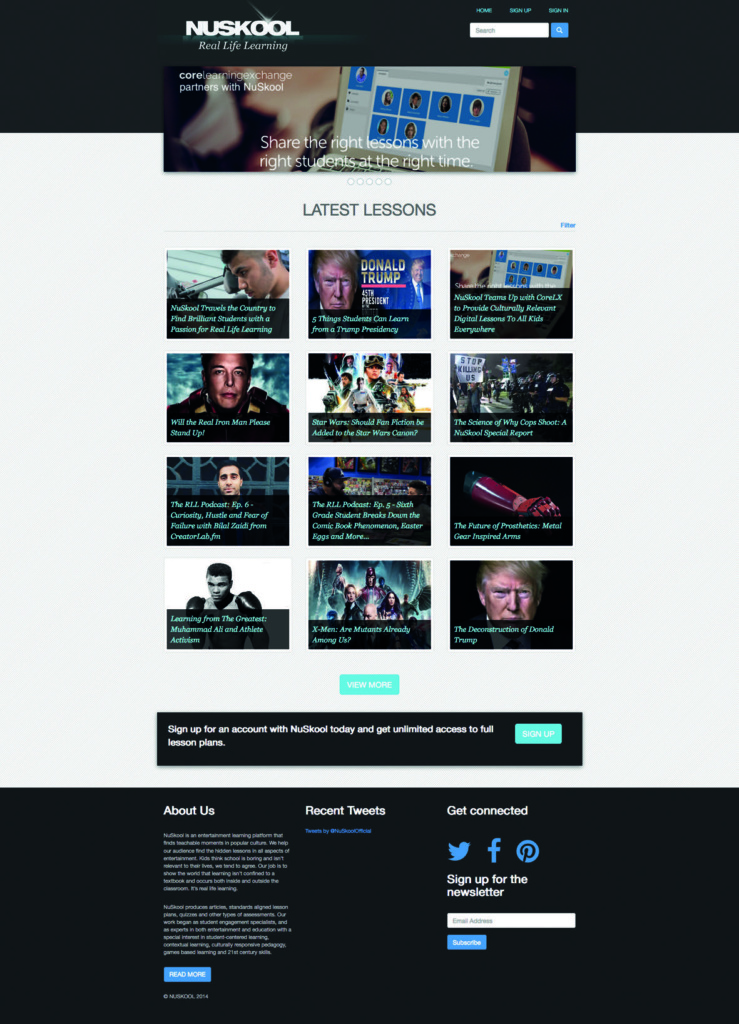
It’s OK to be Smart
https://www.youtube.com/itsokaytobesmart
PBS Digital Studios has more than 50 original web series on offer that explore science, arts, culture and more. ‘It’s OK to be Smart’ is a YouTube channel that looks at science from unconventional perspectives, including through the lens of popular culture. The channel’s host, Joe Hanson, is a PhD biologist and science writer who encourages students to be curious and ask questions as he guides them through the ways that science connects directly to their own lives and interests.
The videos are released weekly and run for between about 5 and 15 minutes. There is a wide range of topics that cover physics, biology, chemistry, engineering and all other aspects of science. The overall approach is light-hearted and fun – Joe Hanson is a bit goofy and keeps humour at the centre of the videos. This is clear in titles such as ‘How poop shaped the world’, ‘Should you eat every day?’ and ‘Why don’t ants get stuck in traffic?’. Although the medium itself fits within popular culture, he also includes pop culture references in some of the videos, such as, ‘Why do Disney princesses all look like babies?’, ‘This rainforest caterpillar looks like Donald Trump’, ‘Attack of the Zombie parasites’, and ‘The science of the Game of Thrones’.
This is a very creative approach to scientific inquiry and his ability to connect disparate elements such as art to atomic fission, neurology to toothpaste and biological instincts to Disney animation is engaging and thought-provoking, demonstrating in practice the type of thinking that is necessary for engagement with scientific principles.
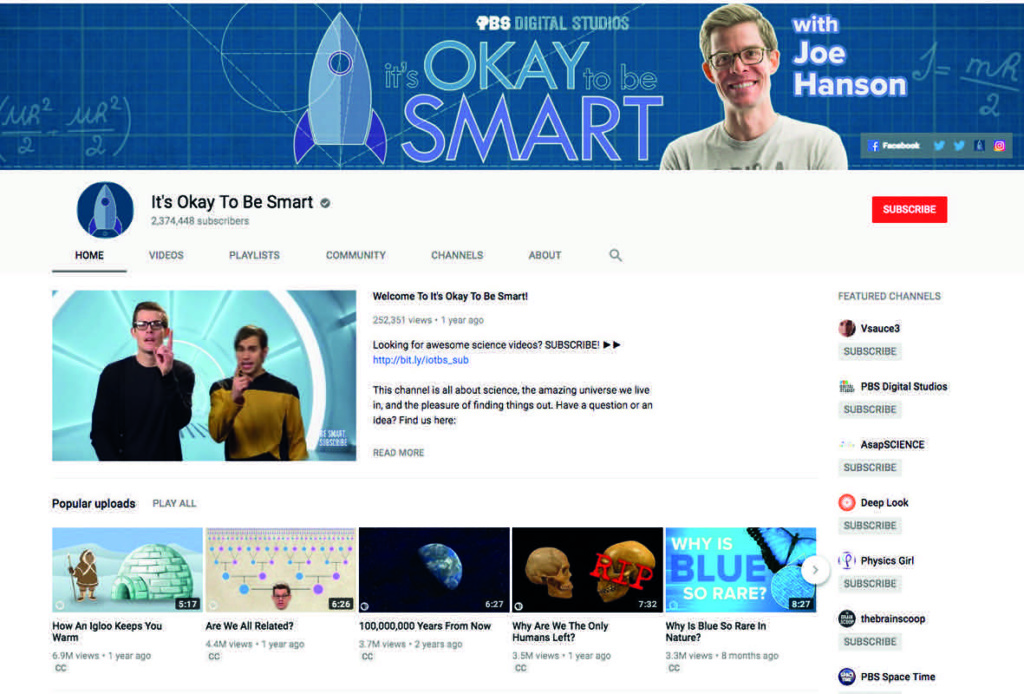
Into Film
Into Film has been featured in this magazine previously in relation to various approaches to teaching through film, especially in relation to their Film Club initiative and resources. Their aim is to give every child and young person aged 5 to 19 in the UK the chance to experience film creatively. Teachers can register as film club leaders to access a huge number of resources for teaching film, including over 3,000 films on DVD that can be borrowed for screenings in the classroom. Films are searchable by curriculum subject and age in addition to various browse features. There are 75 curated film lists that connect to various themes, including pop-culture-related lists such as ‘Celebrity Culture’, ‘Films on Film’ and ‘Superheroes on Screen’. In honour of International Women’s Day, there is a curated list of films that feature women characters, including films by popular studios like Disney and Studio Ghibli.
In addition to providing access to films, Into Film has also created a range of accompanying resources. These range from specific movie guides that consist of PowerPoint presentations with guided questions and activities to go along with the movie. For example, to accompany the movie Paddington 2, there is a set of teachers’ notes that include lesson plans for a ‘pop up’ Paddington PowerPoint presentation, where students think about and discuss stories and characters from the film, consider issues surrounding why people do odd jobs, and investigate and critique pop-up design features. The second lesson involves creating an actual pop-up book based on scenes and characters from the film. There is a PowerPoint presentation included that shows the trailer of the film and outlines the activities developed in the teachers’ guide. The pictures and video are of high quality and there are a range of discussion prompts that help facilitate student-centred learning. Into Film also provides supplementary materials to the film, including interviews about VFX and with the director and cast members.
The Into Film resource centre is all available for free and has resources for all Key Stages. In addition to the great film library and resource centre, they also offer professional development training to help teachers use film to support literacy, film making and animation activities. They run both in-person and online training opportunities and all their activities are supported by their ongoing film clubs, film festival, showcase and film awards, which give students the opportunity to engage more deeply with films and film making.
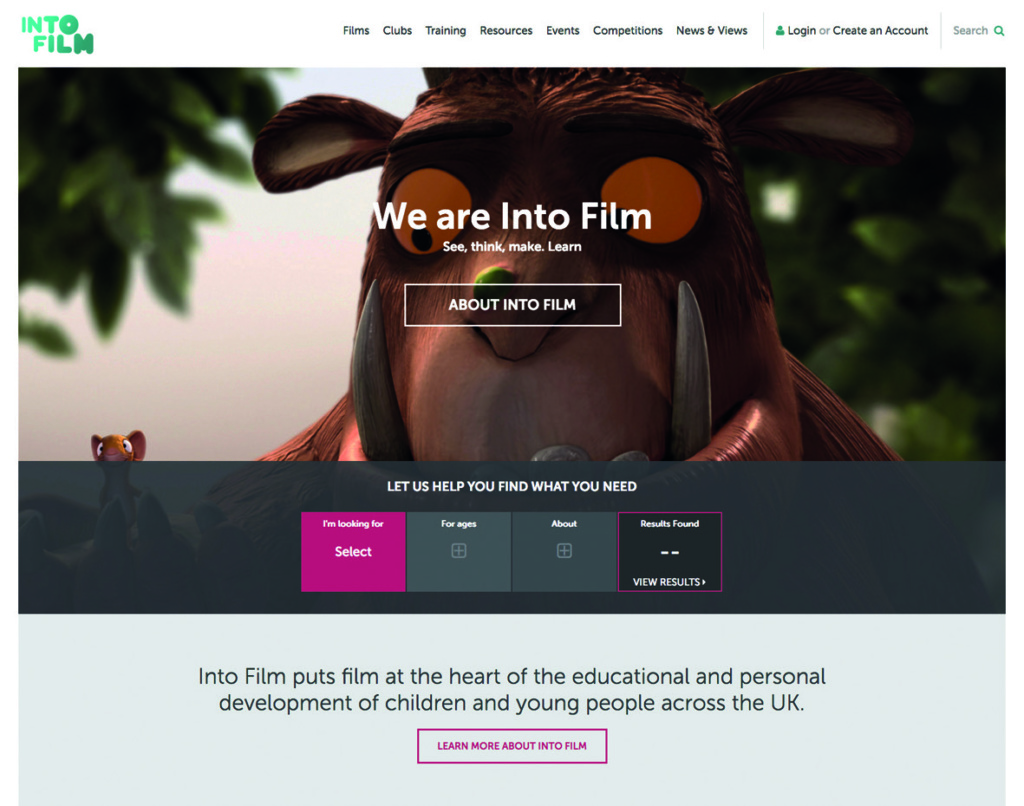
My Pop Studio
My Pop Studio is a creative play experience directed at girls that strengthens critical thinking skills about television, music, magazines and online media. It consists of four areas, a Magazine Studio, a TV Studio, a Music Studio and a Digital Studio.
In the Magazine Studio, users compose a magazine layout featuring themselves as celebrities. They write an advice column, explore the power of digital retouching, and reflect on the role of body image in today’s culture. In the TV Studio, users edit a TV show where the story keeps changing but the images remain the same. They examine their TV viewing choices, comment on teen celebrities, and compare their daily screen time with others. In the Music Studio, users create a pop star and compose her image and song. They explore the power of music in selling a product and search for truth in media gossip. The comment on the values messages in popular music. In the Digital Studio, users test their multi-tasking abilities. They share their experiences with the challenges of digital life online. They consider the ‘what if’s’ of social networking sites and reflect on the power of media and technology in their social relationships.
The studios are all designed to connect with specific learning outcomes, which are detailed on the site. The choices are controlled within the software – the software will not be the new go-to for designing magazines or editing film – however, it is a great way to introduce students to the concepts and activities associated with media production and to encourage them to think about the way popular culture is constructed and how it shapes the experience of the user.
The site is aimed at teen girls, probably best for late KS2 or KS3, with the aim of transforming girls’ experiences with the media messages they are exposed to by helping them move towards developing more active, cognitive, reflective and critical responses. There is an accompanying teacher guide with detailed lesson plans. The resources require Flash player and an internet connection and are set up for the students to be able to work on it on their own or as part of a larger group. There is also additional guidance available for parents.
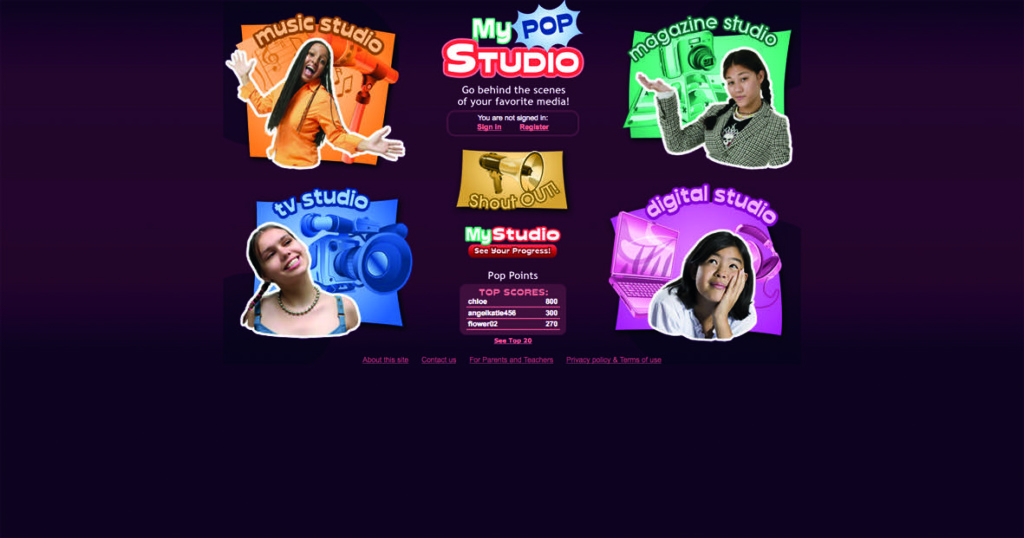
Media Education Lab
The Media Education Lab as a whole is dedicated to improving media literacy through education, scholarship and community service. They have several divisions, including those that focus on teacher education and staff development, curriculum development and youth and community media production. Their ‘Teaching Resources’ section of their website offers a wide range of free multimedia curriculum materials that teachers can use to incorporate popular culture and media into their teaching.
For popular culture-themed lessons, they offer a module called ‘Deconstructing Disney’, which includes videos about the Disney animation film eras, ‘A tribute to Disney’, a scene from ‘Frozen’, a short animated film, as well as a PowerPoint called ‘Deconstructing Disney’ and a pdf curriculum guide. Through the activities, students will learn to recognise that fairy tales are continually being revised for modern audiences and discover that they are relevant because they speak to the challenges of life, They will learn to recognise archetypes, story arcs and stereotypes and they will be given the opportunity to reflect on their attitudes towards Disney, including the pleasures of childhood nostalgia. They will also learn to recognise that Disney films have positive and negative values messages embedded in entertainment and that Disney designs entertainment content to align with merchandising goals and that this has implications for personal identity and cultural values.
There are also guides called ‘Critically Analyzing Teen TV’ and ‘Teach the Conspiracies’. Although most of the site is aimed at media literacy in general, many of the guides create a medium for incorporating pop culture references into the lessons. There are opportunities for students to create media, including a PSA on drug and alcohol use, and a site where they can upload, analyse and evaluate modern propaganda. Compared to some of the other resources here, the specific pop-culture themed lesson plans are minimal, however this is a great place for finding ways to engage with media in the classroom and encourage students to have high-engagement dialogue about what they encounter in entertainment.
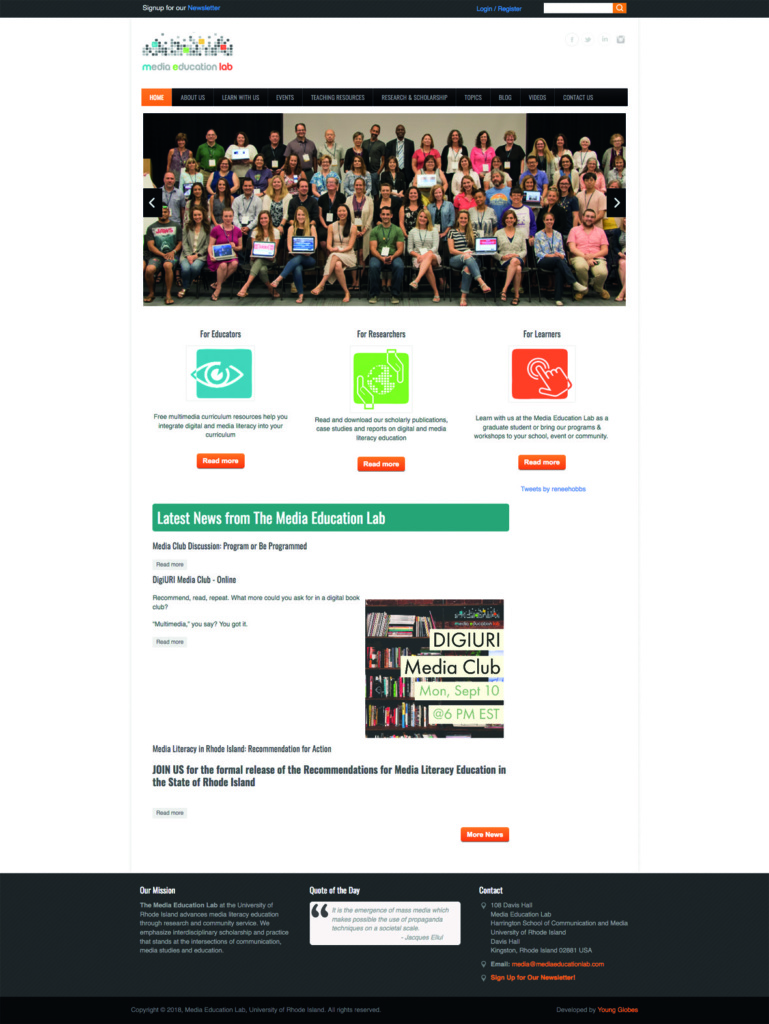
Teach Argument
Teach Argument offers an excellent resource library for curated content and lesson plans relating to (especially American) popular culture. These are primarily developed for the English classroom, although there may be relevance to other subject areas. Every lesson and unit plan, game and pop culture analysis was created with the intention of enhancing learning, deepening thinking, and fostering a love for reading and writing. The focus of all the materials is on ‘argument’ — that is, rhetorical analysis, argumentative writing and critical thinking. Content is developed by teachers at almost every grade level, college writing professors, school administrators and educational researchers. All the lesson plans are connected to the Common Core Framework, integrating thinking skills and practical evaluation frameworks while staying connected to literature, language and learning.
Lesson plans focus on popular music, using songs by artists like Taylor Swift, Justin Timberlake, Beyonce and Ed Sheeran, or on TV shows such as Big Bang Theory. They have themed plans that relate to current events, such as the NFL protests that have been taking place in the US, or specific ad campaigns like the Budweiser or Coca-Cola Super Bowl ads. There are more holiday-themed plans, including ones involving Starbucks Christmas cups and Pumpkin Spiced lattes. The lesson plans have also been curated into educational themes, such as ‘British Lit Bundle’ and there are units that focus on specific literature such as ‘The Fault in our Stars’, ‘Animal Farm’, ‘Beowolf’ and other classics. They also have a range of games, including ‘Fantasy Talkball’, which is a discussion structure that aims to combine “the critical thinking power of Socratic circles with the perks of engagement offered by principles of gamification”. The rules are based on those of ‘Fantasy Football’ and is touted (on the site) as ‘the best class discussion framework ever’.
Although teachers can get free materials by signing up via email, this is a paid service. Fees run from $4.99 per lesson plan to a yearly subscription for $99. Monthly and institutional options are also available. There is clearly some innovative thinking happening here and the passion of the writers and teachers on the site is obvious and inspiring. This is a great resource for connecting high-level engagement with material that is culturally relevant to students.
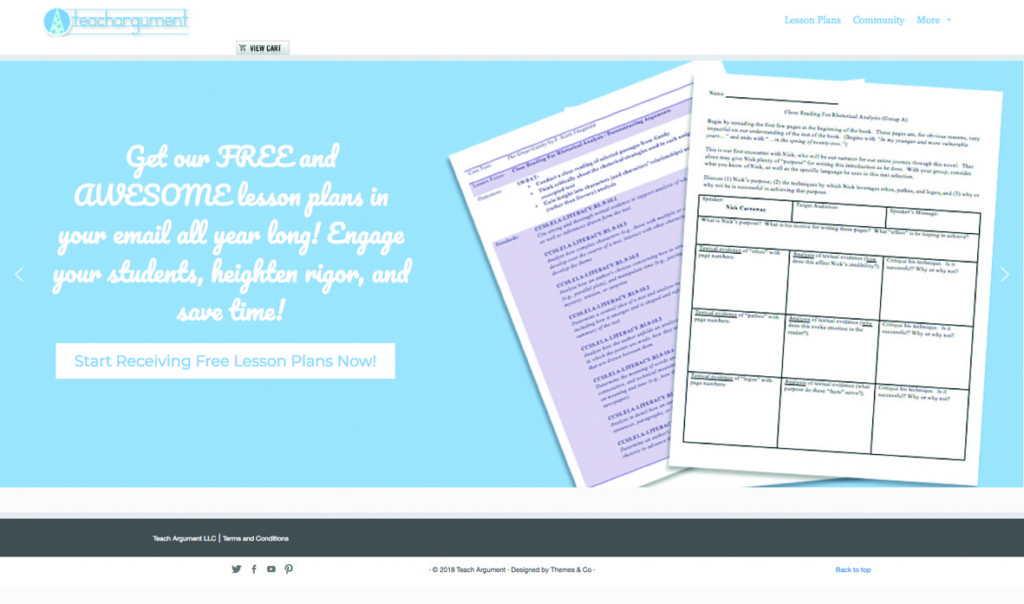
Flocabulary
Flocabulary is a research-based approach to help students “master skills, build vocabulary and develop 21st century skills”. Each lesson consists of a short video on a particular theme that is then followed up by a class discussion and a quiz (either online or that can be printed) that helps assess how much the students have learned. The 10-question quiz covers content, skills and vocabulary from the lesson and with the online version, it is automatically scored and teachers receive a breakdown of the marks, showing where there are weaknesses in students’ understanding.
The videos are divided into subjects, including all the core subjects as well as life skills, vocabulary and current events. The popular culture aspect is best represented in their weekly series ‘The week in rap’ in which the previous week’s current events are distilled into a summary video accompanied by a ‘Flocabulary’ rap. There is a version of this for KS 3 & 4 and one for the juniors, aimed at KS 2. The one drawback of this video series, however, is that it is written for an American audience so some of the terminology and current events items are less relevant to UK educators.
Many of the videos are in the form of songs, raps or stories and they incorporate pop culture references, including James Bond, various sport themes, super heroes, fairy tales, and other topics that would be of interest to students. There are also accompanying detailed lesson plans, vocabulary cards, games, ‘read and respond’ prompts and a feature called ‘Lyric Lab’, which allows students to write their own rap lyrics based on the vocabulary from that week’s lesson. Flocabulary is a subscription-based service with individual teacher or institutional rates available.
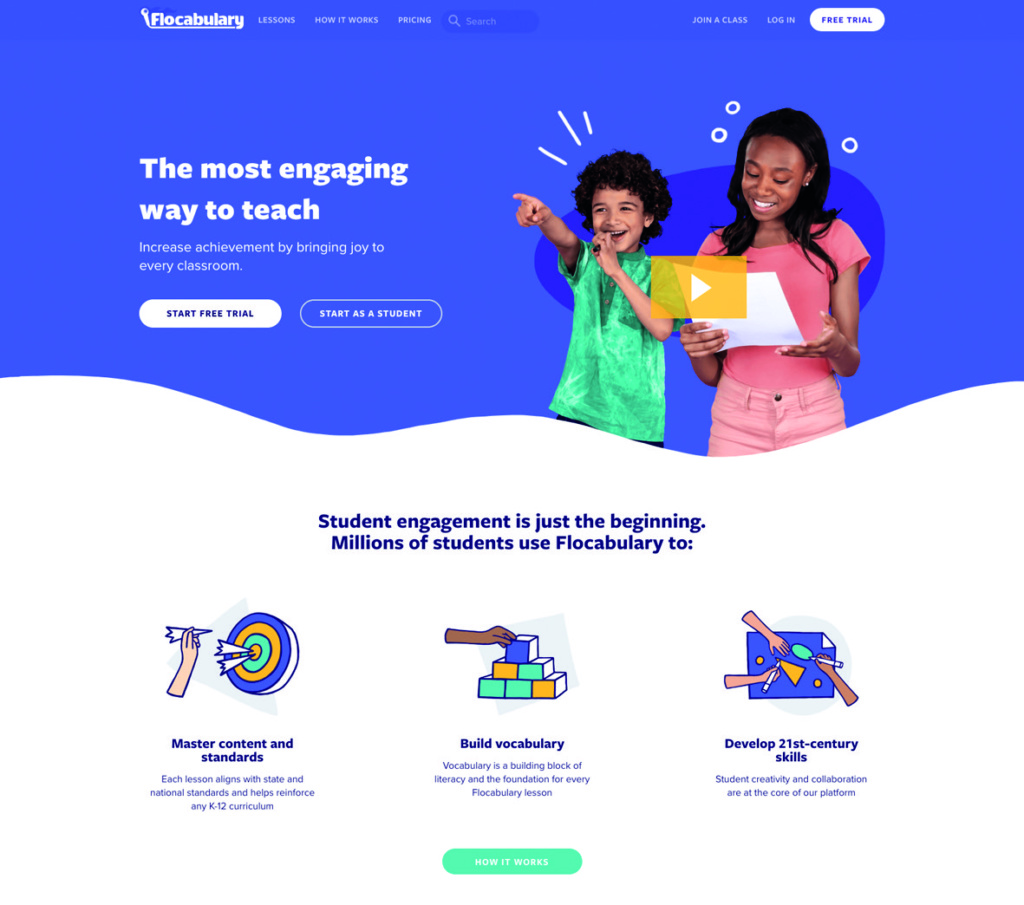
The Museum of Pop Culture
MOPOP in Seattle, Washington has dedicated itself to all things pop culture, and, like most museums, education is an important aspect of the work they do. They offer a variety of educational resources, including lesson plans, oral history interviews and teaching tips on iTunes University. The lesson plans are all free and, although they were developed to connect to exhibitions at the museum, they can be easily tailored to fit into a classroom and the information can be found on recordings and other media.
There are five lesson plans on the site. There is the ‘Anthropology of Punk’, which is an ethnographic study of how punk music forms a part of recent popular culture, particularly in relation to its evolution in the Pacific Northwest in the late 1980s and its popularity through Nirvana and Kurt Cobain. Geared toward students in KS 4-5, it introduces the concept of observing popular culture as an anthropological practice. Source materials include Kurt Cobain’s journals, Billboard and Rolling Stone magazine articles and Nirvana recordings.
‘Poet as songwriter, songwriter as poet: Cobain, Dylan, Shakespeare, and more’ is a lesson plan geared toward students from KS 3-5, focusing on areas of reading, communication and music. The plan looks at the development of poetry from Shakespeare to the Victorians through to modern times, using examples of how it has been connected to music in various times. The information is good, although the lesson activities are limited for this, leaving scope for more current or relevant material to be incorporated. For the ‘Battlestar Galactica’ lesson, students experiment with dramatic script reading and developing strategies for theatrical improvisation. For younger students, there are two lesson plans, one on the ‘Science of Sound’, which explores how students use their knowledge of science and energy to discover how sounds are generated and turned into musical forms. The other plan is on ‘Rhythmic Speech’ or rap and directs students to build vocabulary through musical exercises.
These lesson plans are a great introduction to using pop culture as a mode of inquiry, especially for secondary students, and the oral history recordings on the site are an excellent resource for student projects and for looking at how to examine the lives of artists, musicians and filmmakers and their contributions to the world.
